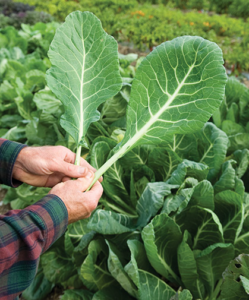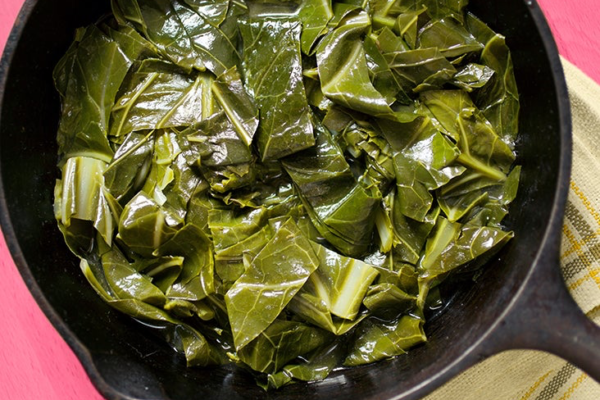

FAST FACTS
Benefits and nutritional information:
- You may have noted that Collards made the “14 best vegetables for health” list. They are rich in vitamins, minerals and fiber.
- Collards are the more rugged members of the brassica family; tolerant of warm weather and cold, more resistant to pests, and slower to bolt.
Starting:
- Collards are members of the Brassica family and so shouldn’t be planted where other members of the family have been grown in the past two years.
- Sow seeds directly in the garden, 1/4” to 1/2” deep, in rows 30” apart.
When to plant:
- Collards tolerate temperatures as low as 10 degrees Fahrenheit, so can be grown year round in the Pacific Northwest.
- Plant in early spring when the soil temperature has reached 40 degrees.
- Collards are a biennial plant, so may be over-wintered and will continue to produce crops during a second season if proper steps are taken to prevent pests from become established.
Thinning, training
- Thin the strongest seedlings to 24” apart when they are 3” tall. (Wash and eat the seedlings you pull.)
Signs of over-watering, nutrient deficiency
- Collards require a constant supply of nutrients to develop on going crops of the large, green edible leaves. Otherwise the leaves will be stunted or develop a pale green/yellowish color.
- When plants are about 6” tall, gently scratch in (without disturbing the roots) a half cup of balanced fertilizer along the rows. Continue to apply fertilizer throughout the growing season.
Pests and pest controls
- All of the standard brassica-family pests will bother collards, but typically not to the degree that affect the more refined members of the family such as cabbage and broccoli.
- Gray wooly aphids and flea beetles can establish infestations.
- Cabbage worms may also show up to feed on the leaves.
- Fungal pathogens such as clubroot, root rot and verticillium wilt produce symptoms of stunted growth and yellowing of lower leaves.
Harvesting
- Collards are another “cut and come again” vegetable. Harvest the outer leaves when they are 6” to 8” long. As you continue to harvest, inner leaves grow to take their place and inner buds continue to produce more leaves.
Other resources and articles
- Collards are best prepared by removing the stems, which can be fairly bitter, and then cutting into bite-size pieces. They can then be either sautéed or steamed, adding vinegar or some lemon juice to enhance the flavor.
- To enjoy collards at their absolute finest, look up one of the many recipes for cooking collards Southern style.


